Two weeks ago we posted about a pair of Pacific-slope Flycatchers (Empidonax difficilis) that had chosen to make a nest on our front porch light.
Tuesday morning, while drinking coffee and looking out the front windows, it was obvious that the Flycatcher air-traffic around the porch had increased significantly. We observed the male flycatcher flying back and forth repeatedly over the course of just a few minutes, and that was our first clue that the nest status had likely changed.
Isn’t he handsome? You have to love that hair-do! He really is a very dapper chappy.
On Sunday, the nest still looked like this…
Then yesterday morning, with the male on guard perched in a nearby tree…
…while the female took a quick nest break, I seized the opportunity for a brief peek…
As you can see, the eggs have hatched! You’ll have to take it on faith that there are four nestlings in the nest, I did count them…it’s just a bit tricky to tell when they’re this tiny…each one is smaller than my thumb nail! However, in this photo, you can (almost) count skulls.
After the fog burned off, and the weather warmed up later in the day, the female took a few more breaks from the youngsters, and I tried for a little video. As the video starts, listen for the sharp ‘peewhitt!’ sound of the male (known as the male’s position note…trust me, he still had his eye on me).
I apologize for the slightly fuzzy video, it’s not the easiest area to reach, and opportunities to catch images with very vigilant parents around, are infrequent at best.
Did you see the little one to the left of the nest? Doesn’t it look like that one is dreaming about flying already? Maybe he/she will be the first to fledge…
The female flycatchers are primarily responsible for the nest building, although we did note the male gathering spider-webs during nest construction, so the males at least seem involved in the gathering of materials. The females alone incubate the eggs though, and this female has been glued to the nest for the past two weeks, with the exception of very very brief breaks. We’ve never observed the male on the nest. This doesn’t mean the male is a slouch though. During the last two weeks we’ve seen the male keeping vigilant watch close by, and audibly communicating with the female throughout the day, using the ‘position note’ call you can hear in the video above. If you missed it, this audio file will give you an idea what to listen for in the video:
Pacific-slope Flycatcher Male Position Note
The male is almost always seen standing guard, close by, when the female takes a break from incubation/brooding duty.
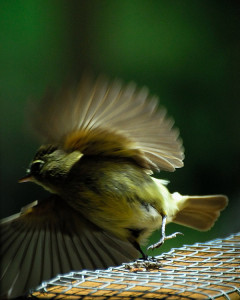
As the female returns to the nest, the male takes off. (Next time, I'll bump up the shutter speed...oops!)
Over the next few weeks the parents will be very busy keeping these young ones fed, and safe.
It’s not yet clear if both the female and the male feed the offspring, or if this duty also falls to the female alone. Regardless, we’re very happy to welcome any new Flycatchers to Curbstone Valley, as hopefully they’ll be able to help keep our Pear sawfly populations in check in the orchard.
Although Flycatcher young are altricial, they will transform from their currently helpless state, to young capable fledglings within about two weeks, so their development will change significantly from day to day. With four hatchlings, it’s going to get a little crowded in this tiny nest before fledging!
Over the next two weeks, to avoid inadvertently flushing anyone from the nest prematurely, the front porch will remain off limits. I’ll try to catch a few photos in the next few days to document their rate of development, but after that, we’ll give them a wide berth, as we want to do our part to help ensure that every one of these little ones makes it to fledging, primarily to help bolster our bug-catching reserves here on the farm! That said, we do have predators here…let’s hope our resident Steller’s Jays, who are notorious nest-raiders, don’t find this nest!

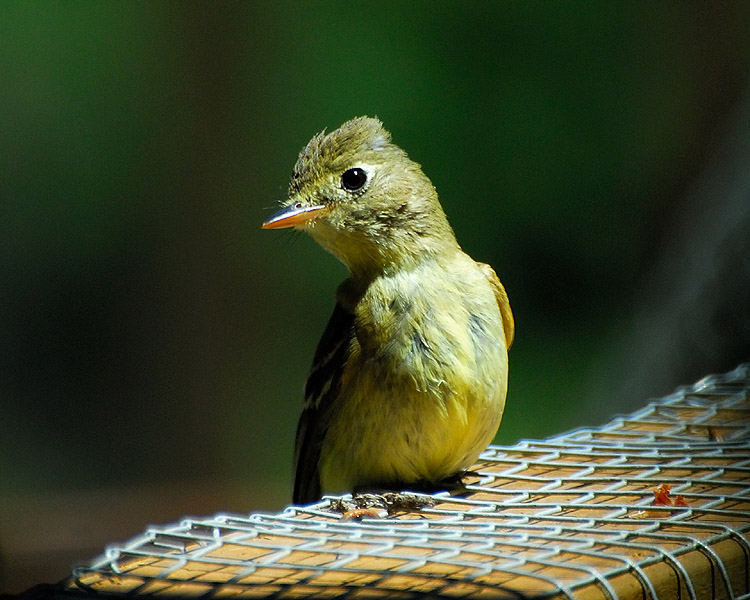
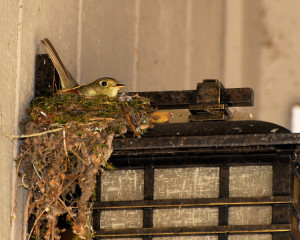
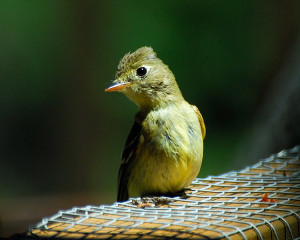
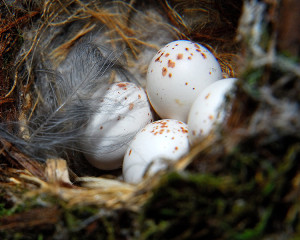
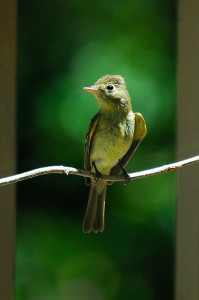
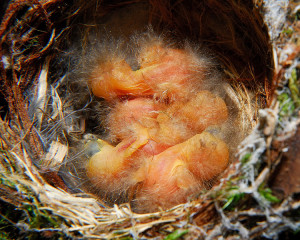
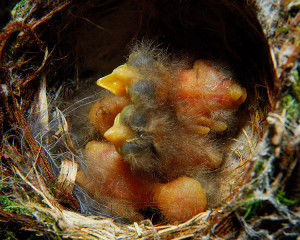







Dear Clare, How adorable they are. I watched your little film over and over, and am so impressed that you managed to capture this very special event so beautifully. I shall indeed look forward to future progress reports and shall be interested to see how they will all fit into the tiny nest space before they take flight. First take off…..now what an exciting moment that will be!!
I’m so glad your babies seem safe. Alas, here, our predators are numerous. That said though, despite not locating the GPS location of the nest, I have heard the repeated ‘peewhit’ sound of the male Flycatcher recently, suggesting that they may have re-nested nearby. (He gets particularly vocal when I’m near an oak uphill of their original nest). I hope they re-nested. We do all we can not to interfere here, and predators aside, I wish them luck in hatching a successful brood this year. I admit to being comforted by the repetitive ‘peewhit’ vocalizations in the early mornings here.
Babies! We had a bird set up shop in a rose bush once. It was really fun watching the babies grow and become fledglings. The hard part was keeping th dogs away from them.
Oh Clare – what a picture of loveliness…or should that be super shots of a marvellous little bird. And now four more. Happy endings make me cry!
Laura x
Oh, those babies are beautiful! Flycatchers are so adorable. Love the daddy’s haircut!
Your Stellar’s Jays behave like our fiscal shrikes. We had one hanging on Spirulino sparrow’s cage, assuring him, to his obvious terror – I’d eat you if I could get at you! That predator’s beak looks so menacing next to his prey.
Clare
Those are great photos of the birds and the little babies. I really do hope that none of those jays find the nest.
We have a nest here and I’ve been taking photos since egg stage and even within 2 days I’ve noticed that our little ones have become more “hairier”.
This is SO magical! I am completely enchanted and can’t wait to send my daughters here to see for themselves. Beautiful, beautiful photography and videography. I love the one where the wings show the movement of flight!
Thanks so much for this gift…
beautiful photos of these flycatchers, thanks for sharing
Hi CV,
Fantastic news that the eggs have all hatched, I hope the parents successfully raise the little chicks! 😀
!!! Soooo exciting! I love that wing shot, by the way- very National Geographic.
Marvellous pictures really.
I read your profile on Blotanical & am impressed by what you are trying to achieve on your farm. In this age of rat race & economic crisis I believe a rich person is not he who has a bank account but he who can feed himself & family without harming nature.
Wish you all the best.
Ibrahim
How informative! Those babies are so cute. Insect eating birds are always a plus for a garden! I have a flock of sparrows that gathers on my squash fence a couple times a day to check over my garden for edibles. That squash fence is paying off in ways that I hadn’t imagined 🙂
Sunday, July 11, 2010. Our second clutch of babies are here! I just climbed the ladder while she was away and and used a flat large square hand mirror to see the baby flycatchers. We are in ALERT mode now! We pray this clutch will fledge without any unforeseen problems. I was able to snap a couple of photos of her in the nest. Our garage door’s electrical box seems to be a safe haven for mother and chicks.